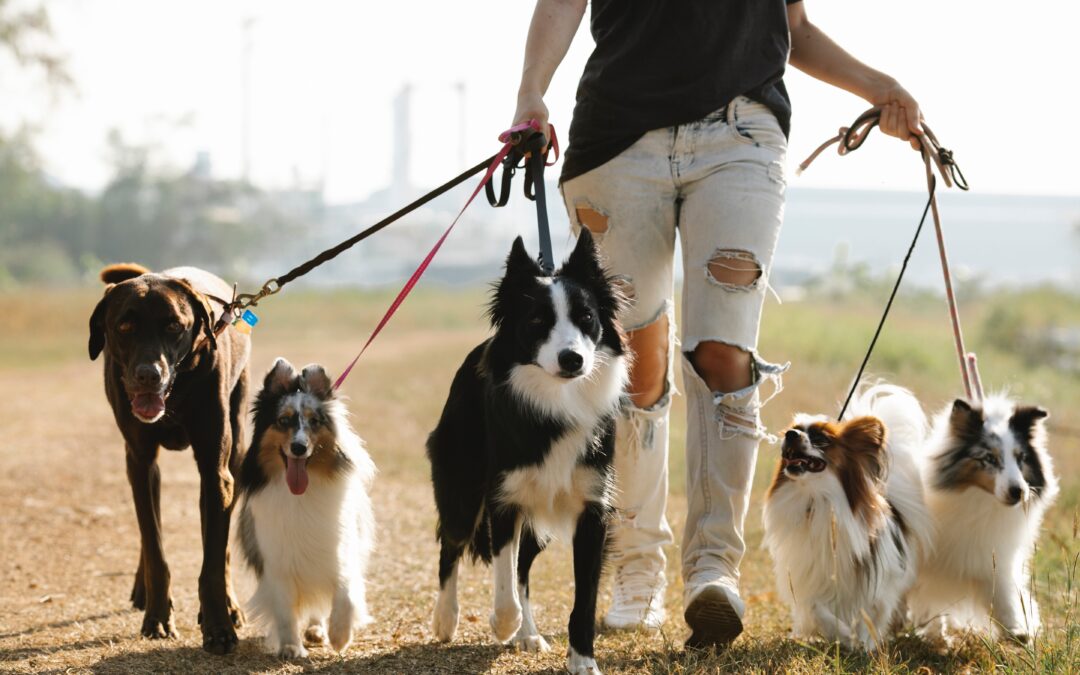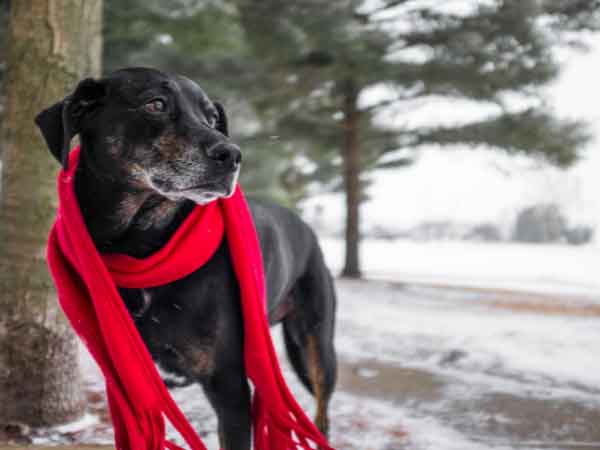What temperature is too cold for dogs?
Generally, temperatures at or above 45°F will not require any special sweater or coat. When temperatures start to fall below 45°F, some cold-averse breeds will get uncomfortable and will need protection. For owners of small breeds, puppies, senior dogs, or thin-haired breeds, anytime the temperature outside feels at or below 32°F, pull out the sweaters or coats! Once it drops to below 20°F, all dog owners should at least be aware of their dog’s well-being and look for signs that your dog is too cold, even if they are a breed that can take the cold weather.
All Dogs Aren’t Created Equal
Dogs are individuals. An outdoor temperature that feels downright balmy to one dog might send another in search of shelter. What are some of the variables that affect how dogs respond to the cold?
Coat type – Dogs with thick, double-layered coats tend to be the most cold-tolerant (think Siberian Huskies, Newfoundlands or Samoyeds). In most cases, these breeds have been developed in Northern climates and may also have other anatomical, physiological or behavioral attributes that allow them to thrive when it’s frigid. On the other hand, dogs who have exceptionally thin coats (e.g., Greyhounds and Xoloitzcuintli) suffer the most in cold weather.
Coat color – On a clear day, black, brown, or other dark-coated dogs can absorb significant amounts of heat from sunlight, keeping them warmer in comparison to their light-coated brethren.
Size – Small dogs have a larger surface area to volume ratio. In other words, the smaller dogs are the more skin they have (in relation to their “insides”) through which to lose heat. Therefore, small dogs get colder more readily than do large dogs … all other things being equal.
Weight – Body fat is a good insulator. Thinner dogs tend to get colder quicker than do their heftier counterparts. That said, the health risks of being overweight far outweigh any benefits, so don’t fatten up your dogs during the winter months in a misguided attempt to protect them from the cold.
Conditioning – We’ve all experienced this one. Fifty degrees feels quite chilly in October, but after a long, cold winter, a fifty-degree day in April can make us break out the shorts and t-shirts. Dogs who are used to cold temperatures handle them much better than do pets who aren’t.
Age and Health – The very young, the very old, and the sick are not as able to regulate their body temperatures in comparison to healthy dogs in the prime of their lives, and they, therefore, need greater protection from the cold.
Cold Temperature Guidelines for Dogs
In general, cold temperatures should not become a problem for most dogs until they fall below 45° F, at which point some cold-averse dogs might begin to feel uncomfortable. When temperatures fall below 32° F, owners of small breed dogs, dogs with thin coats, and/or very young, old or sick dogs should pay close attention to their pet’s well-being. Once temperatures drop under 20° F, all owners need to be aware that their dogs could potentially develop cold-associated health problems like hypothermia and frostbite.
The best way to monitor dogs when it’s cold is to keep a close eye on their behavior. If you notice your dog shivering, acting anxious, whining, slowing down, searching out warm locations or holding up one or more paws, it’s time to head inside.
How will I know if they are too cold?
Like us, a cold dog will show signs that they are cold. Keep an eye out for behaviors like shivering, acting anxious, whining, or slowing down. If they start to search out a warm place to lie down or hold up one or more paws, it is probably a good time to head inside and warm up.
Remember, dogs can get cold just like us! Make sure you know your dog and his behavior when he gets too cold! You may find out that a sweater or coat is just what he needs to enjoy playing in the snow!
More Village Barker

How to Prevent Fleas
Flea prevention is an essential part of maintaining the health and well-being of dogs. Fleas are external parasites that can cause various problems, such as itching, skin irritation, and even...

Twelve Amazing Facts about Dogs
Dogs communicate through body language: Dogs use various body language cues to communicate their feelings and intentions. Tail wagging, ear position, facial expressions, and body posture are...

